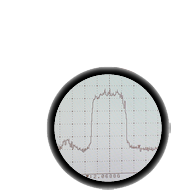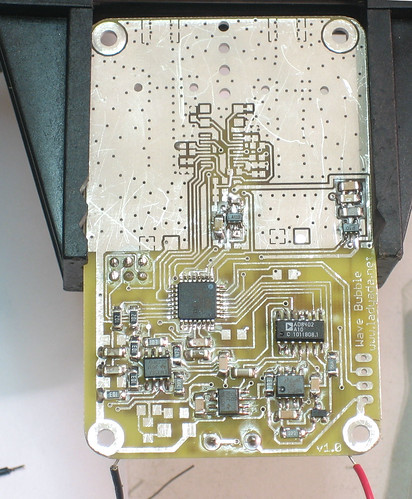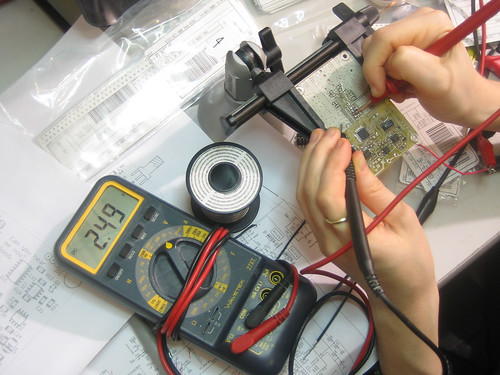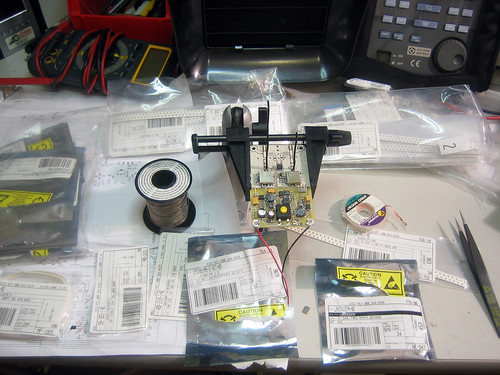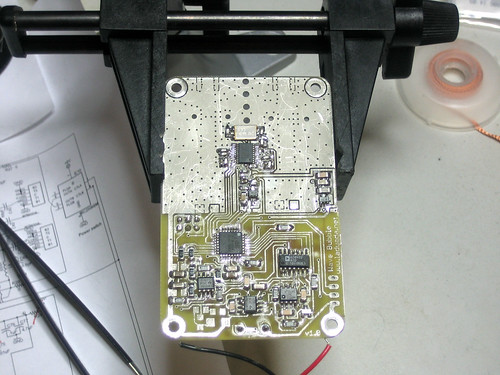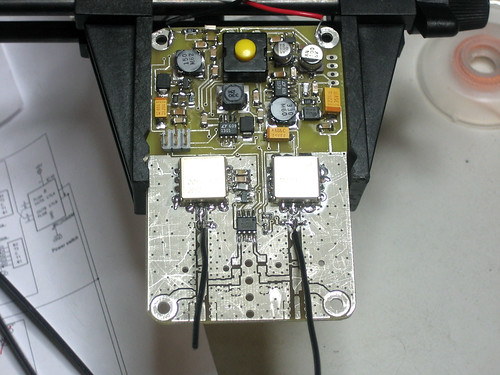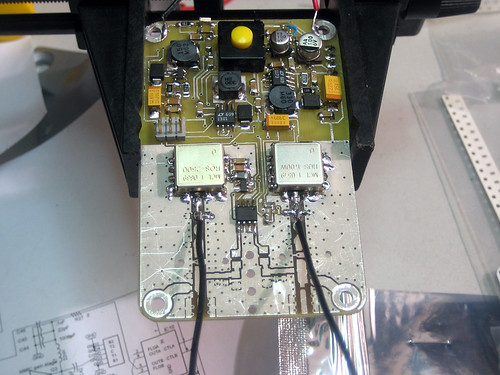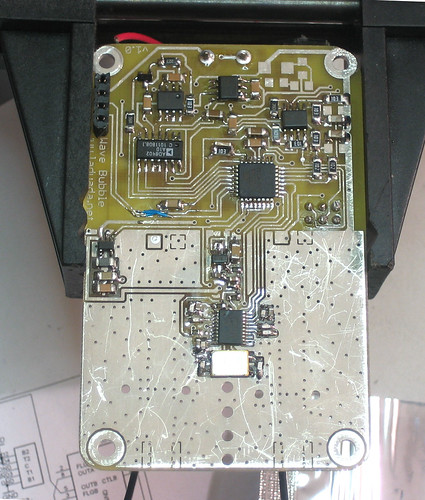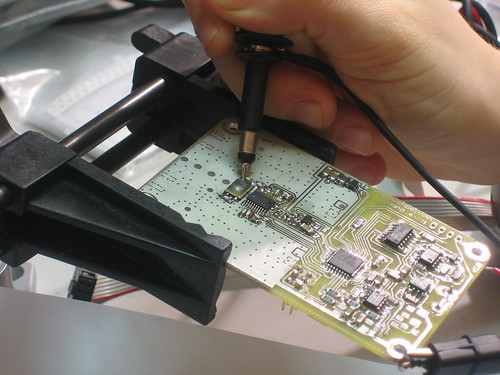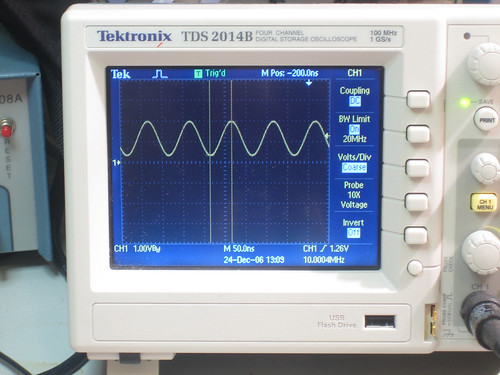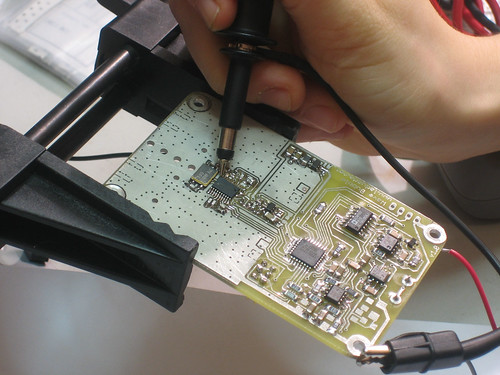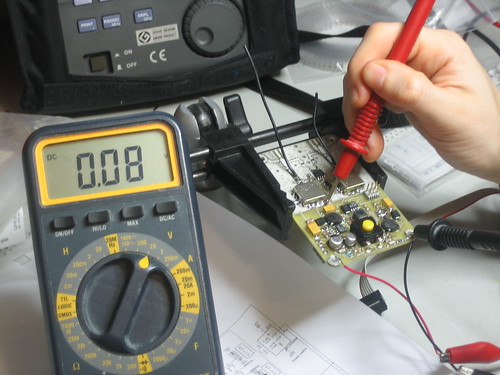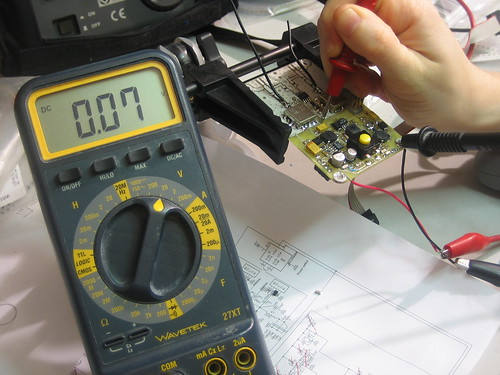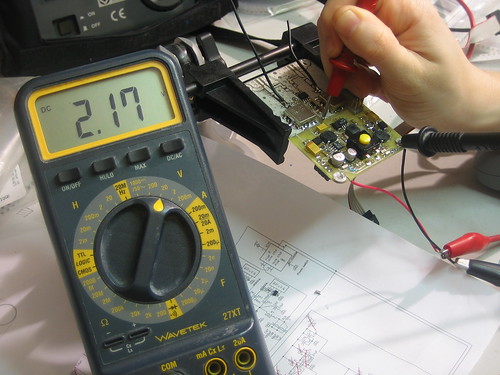PLL notes
While the most annoying part of the assembly process, the PLL is the key part of this design. There are multiple test programs and modes for verifying you've 'got it right' so be sure to do them all. The PLL chosen works well, but requires output resistors to convert the 1mA current pump to voltage for input to the microcontroller. Although the UART is tested at the next step, it might not be bad to test that now and then use it to help you debug and play with the PLL.
In v1.0, 0.1uF capacitors should be installed 'on top' of the 1206 10K resistors, will be fixed in next revision. Oops.
Parts
| Part # & Datasheets | Name |
Description |
Distributor |
Qty |
Cost |
Total |
|---|---|---|---|---|---|---|
| *LMX2433TM | IC16 |
Dual 3.6/1.7GHz PLL | 1 |
$4.20 | $4.20 | |
| *LP2985IM5-2.5 | IC15 |
2.5V regulator | 1 |
$1.00 | $1.00 | |
| ABMM-10.000MHZ-B2-T | X1 |
10.000MHz Crystal | 1 |
$1.03 |
$1.03 |
|
| 3.9pF 0603 | C60 |
Stabilizer for gain stage | 1 |
$0.06 | $0.06 | |
| 5.6pF 0603 | C61 |
Stabilizer for gain stage | 1 |
$0.06 | $0.06 | |
| 20pF ceramic 0603 capacitor | C81, C82 |
20pF crystal resonant capacitors (you can also use 22pF) | 2 |
$0.10 |
$0.20 |
|
| 100pF 0603 | C71, C72, C74, C78-C80 |
Filter capacitors | 5 |
$0.06 | $0.30 | |
| 0.01uF 0603 | C27, C70, C73, C75 |
Filter capacitors | 4 |
$0.06 | $0.24 | |
| 0.1uF 1206 | C25 |
Filter capacitors | 1 |
$0.08 | $0.08 | |
| 0.1uF 0603 | C76 |
Filter capacitors | 1 |
$0.06 | $0.06 | |
| 1.0uF 1206 | C26 |
Filter capacitors | 1 |
$0.18 | $0.18 | |
| 1.0uF 0603 | C50-C53, C63, C77 |
Filter capacitors | 4 |
$0.05 | $0.20 | |
18ohm 0603 |
R20-R22, R29 |
Power supply filters | 4 |
$0.08 | $0.32 | |
| 50 ohm 0603 | R33, R34 |
PLL feed resistors | 2 |
$0.08 | $0.16 | |
| 10K 0603 | R40, R42 |
PLL output current sinks | 2 |
$0.06 | $0.12 | |
| 10K 1206 | R41, R43 |
PLL output current sinks | 2 |
$0.06 | $0.12 | |
| Total | $3-$9 |
Assembly
